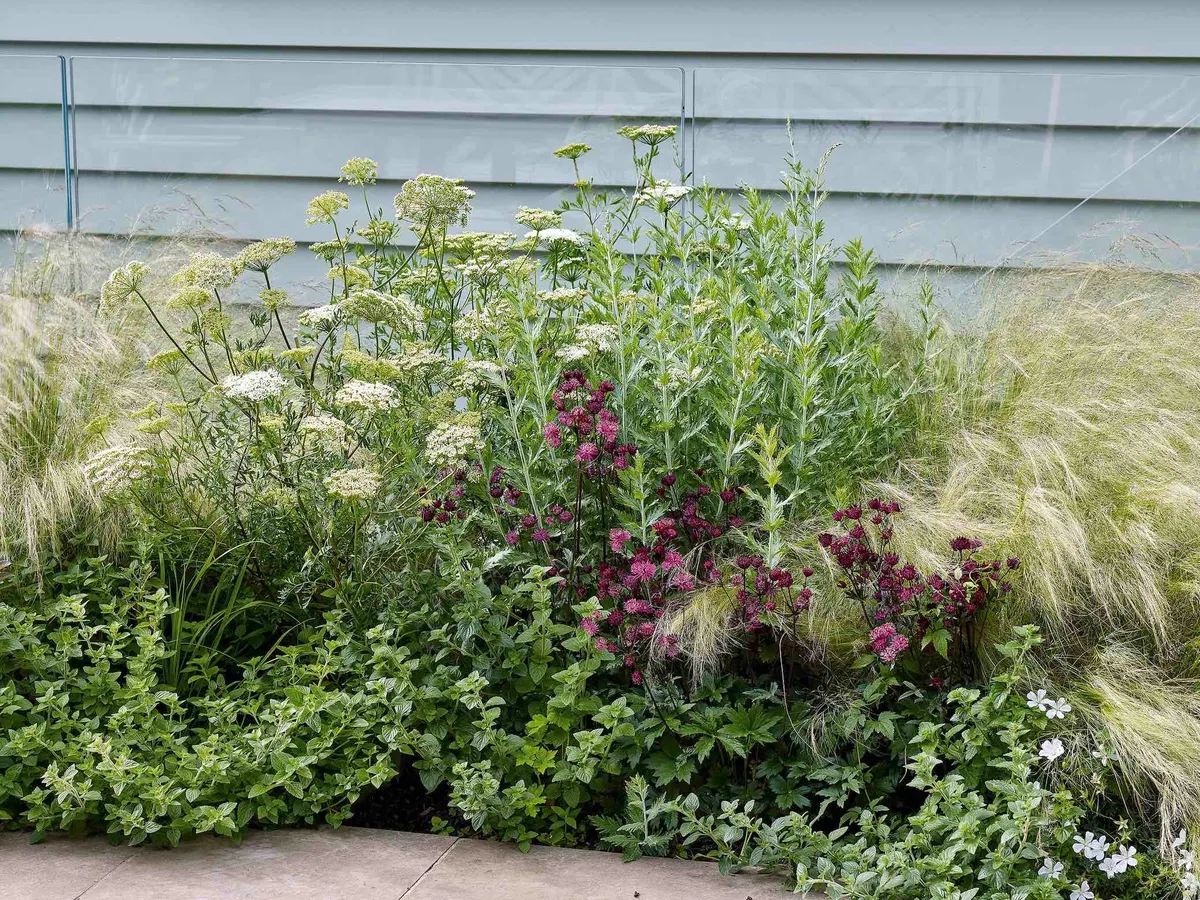In brief
What Private garden. Where Oxford. Size 480 square metres. Soil Free draining. Climate Temperate, but shaded by mature trees. Hardiness zone USDA 8.
The concept
Building work is often the catalyst for a garden redesign, but when Katie Guillebaud was first called to north Oxford in 2014 it was to help her clients meet planning requirements for alterations to their house. “The area has a lovely urban-village vibe, and their timber-clad house fitted right into it. But the house was also set in a blank canvas – the front was paved over with black concrete setts and the back was a rectangle of grass, albeit with a few nice trees. My brief was to make it pretty.” Katie is more used to working on large country gardens, where her exquisite designs have a certain Arts and Crafts spirit rendered in an expansive New Perennial palette of plants. “Obviously space was an issue here, but I enjoyed the discipline of working on a smaller scale to create a similar effect,” she says.
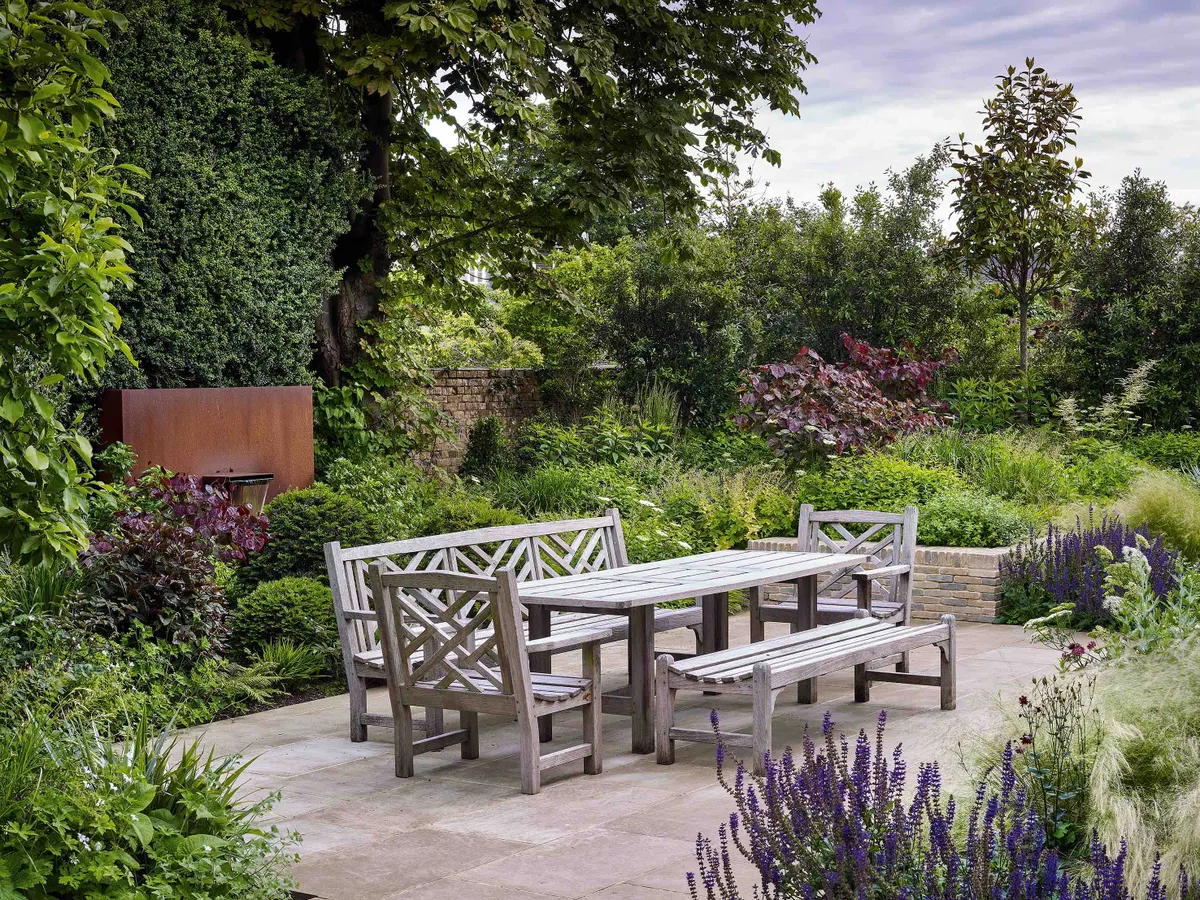
“My style is contemporary with an emphasis on naturalistic planting, which suited this site where the building is part cute cottage and part cool New England beach house. But it was also important to make the most of the space, and how the light moves across it, rather than impose anything too contrived.”
The planting
First to go was the lawn, which had in any case always struggled in the shade of a mature horse chestnut. “In its place I put a large terrace of sawn York stone, which worked stylistically with the glass balustrading of the new basement extension and gave plenty of entertaining space in the sunniest part of the garden. There is a slight slope in the garden, which I formalised with a low retaining wall of silvery Vande Moortel bricks that I also used for paths through the flowerbeds. And then I just went for it with the plants.”
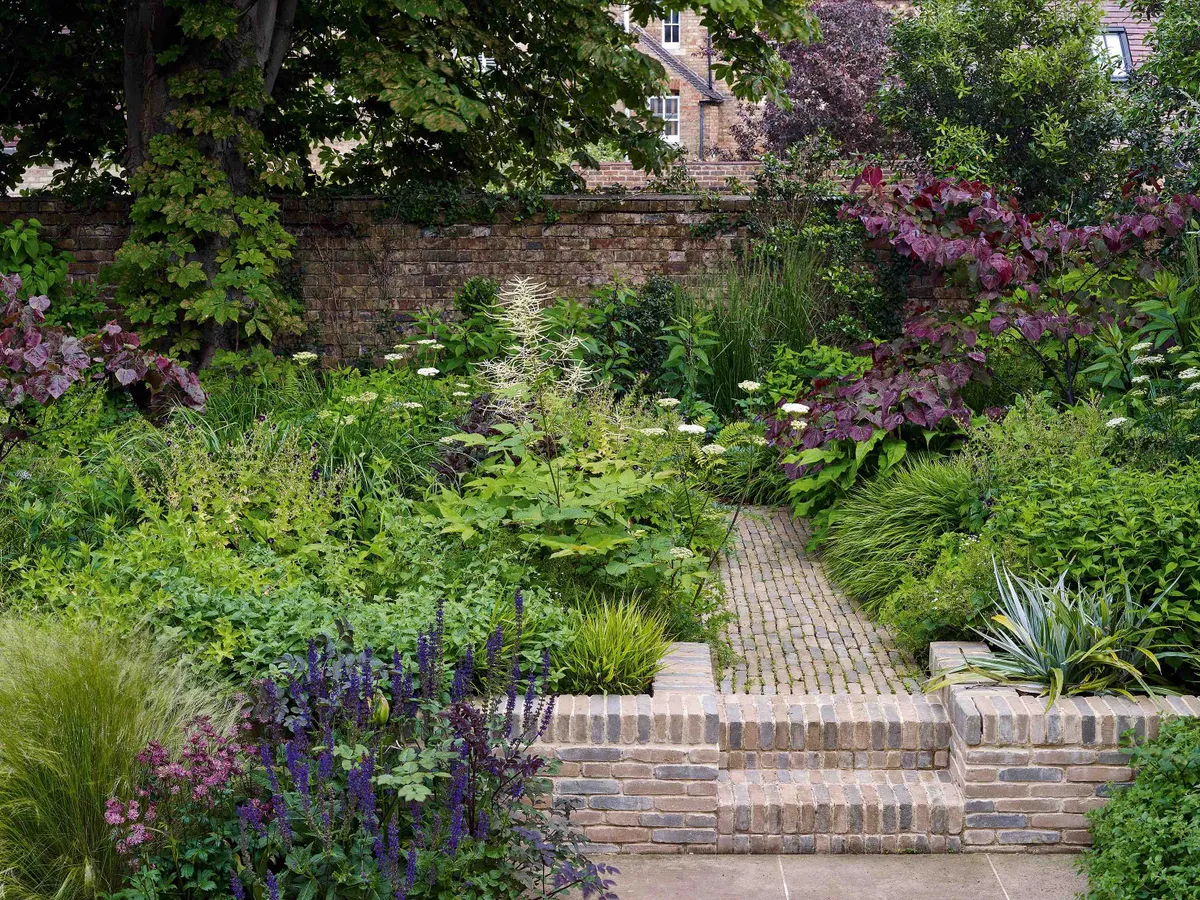
Against the glass balustrades, in the sunniest beds, Katie planted an airy, transparent mix of Stipa tenuissima, Calamintha nepeta ‘Blue Cloud’ and Astrantia ‘Ruby Star’, while the rest of the garden is filled with bold swathes from a more muted palette. Helleborus x hybridus ‘Blue Metallic Lady’, Scutellaria incana, ‘Blue Barlow’ aquilegias and a selection of ferns and grasses run through the beds. The dark foliage of Ageratina altissima ‘Chocolate’ is brightened with tiny white flowers from summer right through to November, and there are also white foxgloves, Cenolophium denudatum and persicaria to stop it feeling too sombre. “It is dry and shady, but there are so many beautiful things that thrive here in the dappled light.
“I piled in spring bulbs for early interest, but my passion is for late-summer and autumn perennials so the effect builds through the year. There are lots of grasses – Hakonechloa macra, Calamagrostis brachytricha, Carex muskingumensis, Calamagrostis x acutiflora ‘Karl Foerster’ – that look great all winter.” Within this exuberant expanse of colour and texture, balls of clipped yew provide anchoring, year-round heft that stops it all becoming too flouncy.
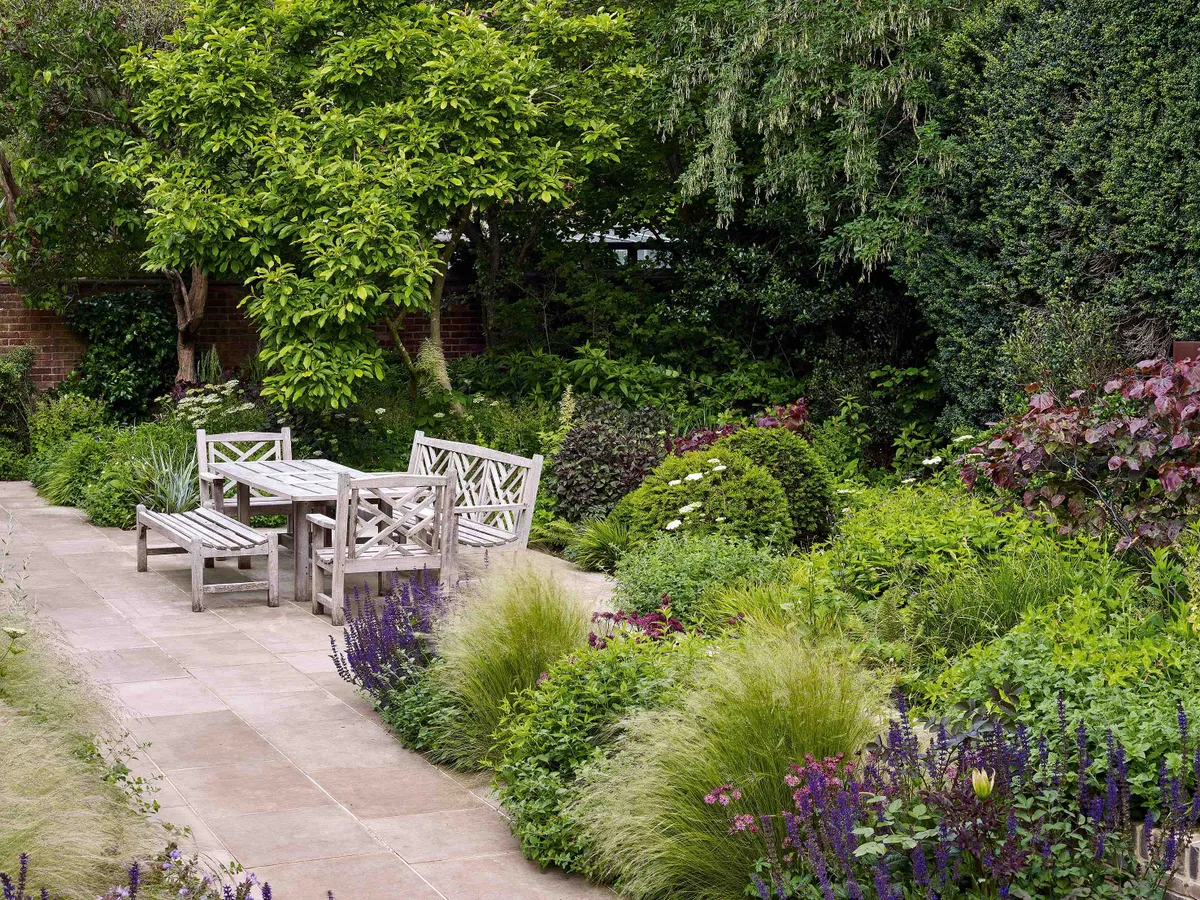
Final touches
Katie has intentionally repeated her plant palette across the whole back garden, most notable in the splashes of deep purple from Cercis canadensis ‘Forest Pansy’. Pollarded every few years to keep it shrubby in habit, this richly coloured cercis echoes the rusty finish of a contemporary Corten steel water feature centred on the rear boundary. As the garden is overlooked by neighbouring houses, Katie brought some semi-mature trees to increase the sense of privacy. A strawberry tree, Arbutus unedo, three multi-stemmed Quercus ilex and a standard Magnolia grandiflora now form a rather deluxe copse down one side of the garden. The terrace is screened by a well-shaped Betula ermanii and a fine specimen Malus x robusta ‘Red Sentinel’ brightens the view from the house with a sequence of interest that starts with blossom in early spring and goes on until the last of the red autumn crab apples are eaten by birds.
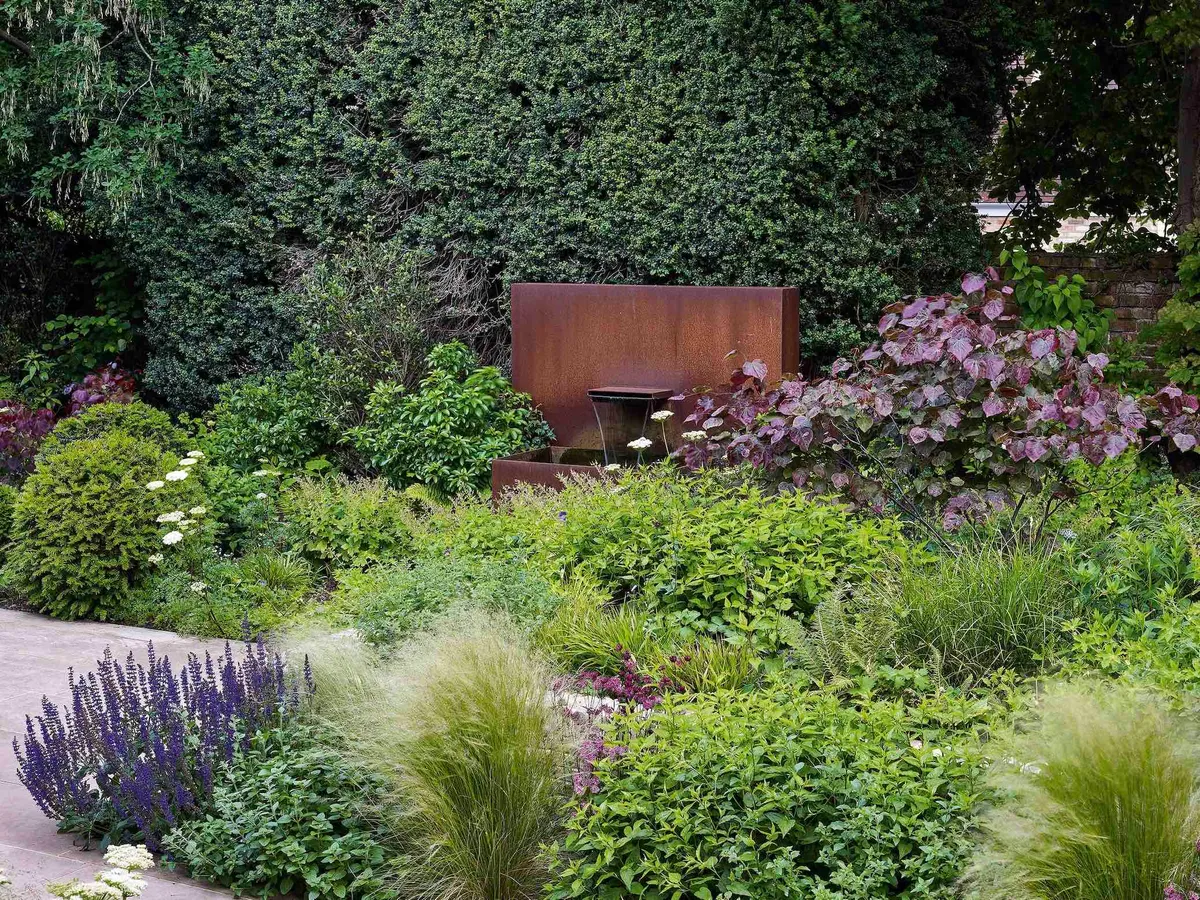
Looking out over a sea of plants animated by butterflies, bees and a gentle breeze, there is no question that Katie has given her clients the pretty garden they asked for, but she has done it with an intelligent edge which, like the north Oxford neighbourhood in which it is located, keeps it firmly on the right side of cool.
6 Key Plants
1
Salvia x sylvestris ‘Mainacht’
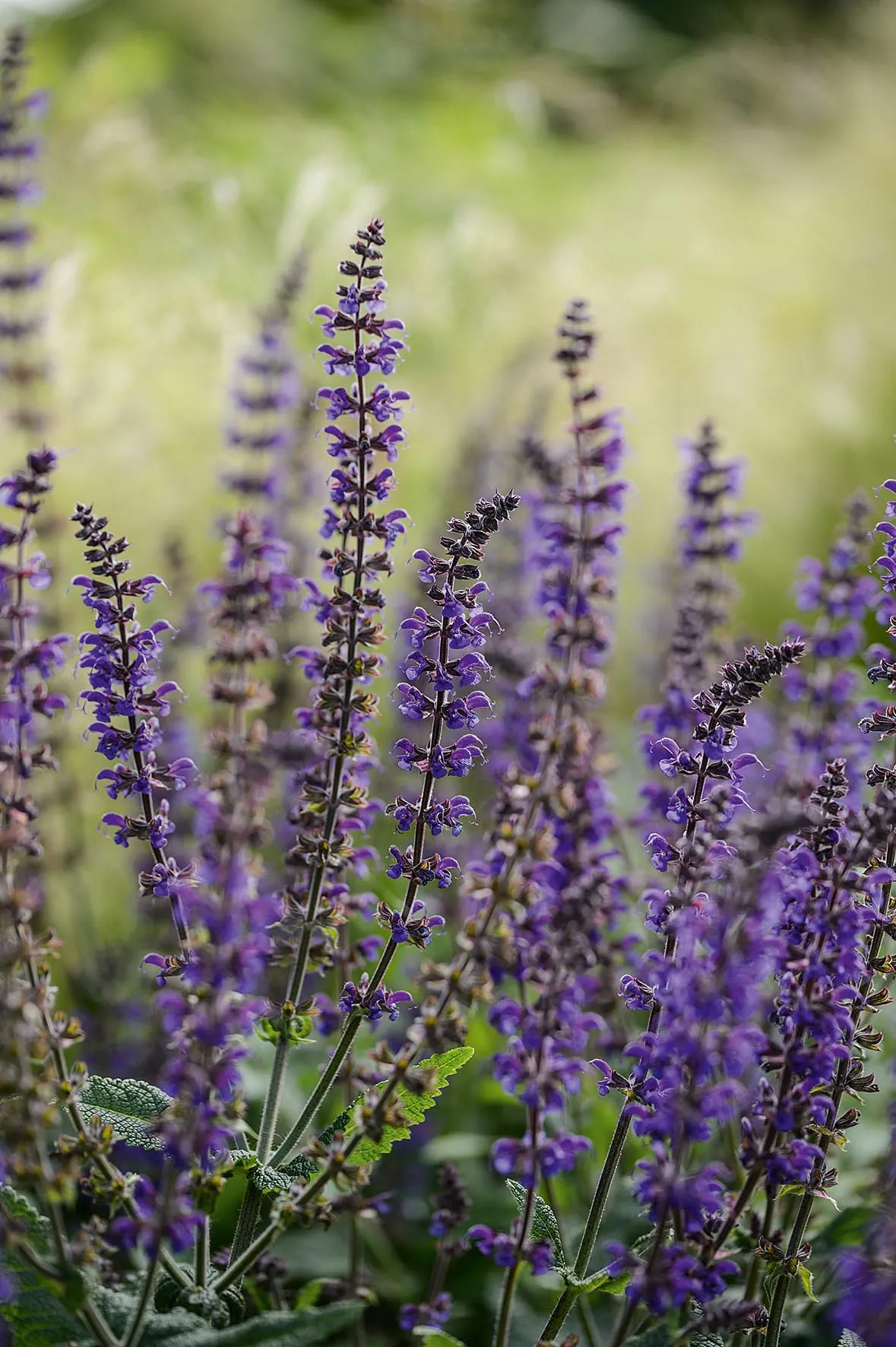
Like all salvias, this compact form, with its dark-green foliage and dense racemes of violet flowers, is happy in freely draining soil, but tolerates a degree more shade than most of its sun-loving family. Deadhead regularly for flowers from late spring to summer’s end. 75cm. AGM*. RHS H7, USDA 4a-8b†.
2
Stipa tenuissima
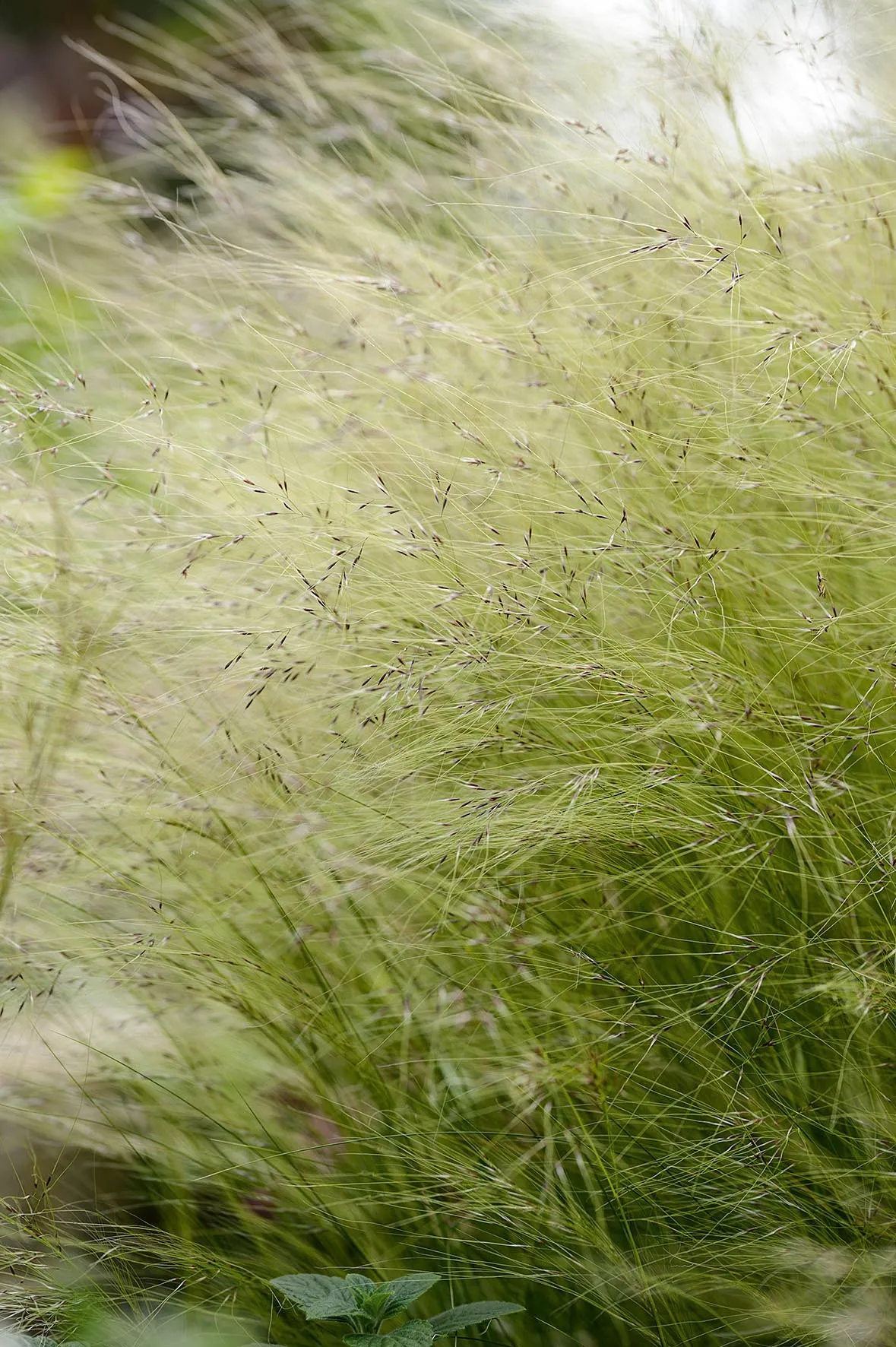
Translucent and airy, this dainty ornamental grass sways in the slightest breeze and complements a huge range of herbaceous perennials. When caught in slanting sunlight, the feathery seedheads glow like spun silver. 60cm. AGM. RHS H4, USDA 7a-10b.
3
Astrantia ‘Ruby Star’
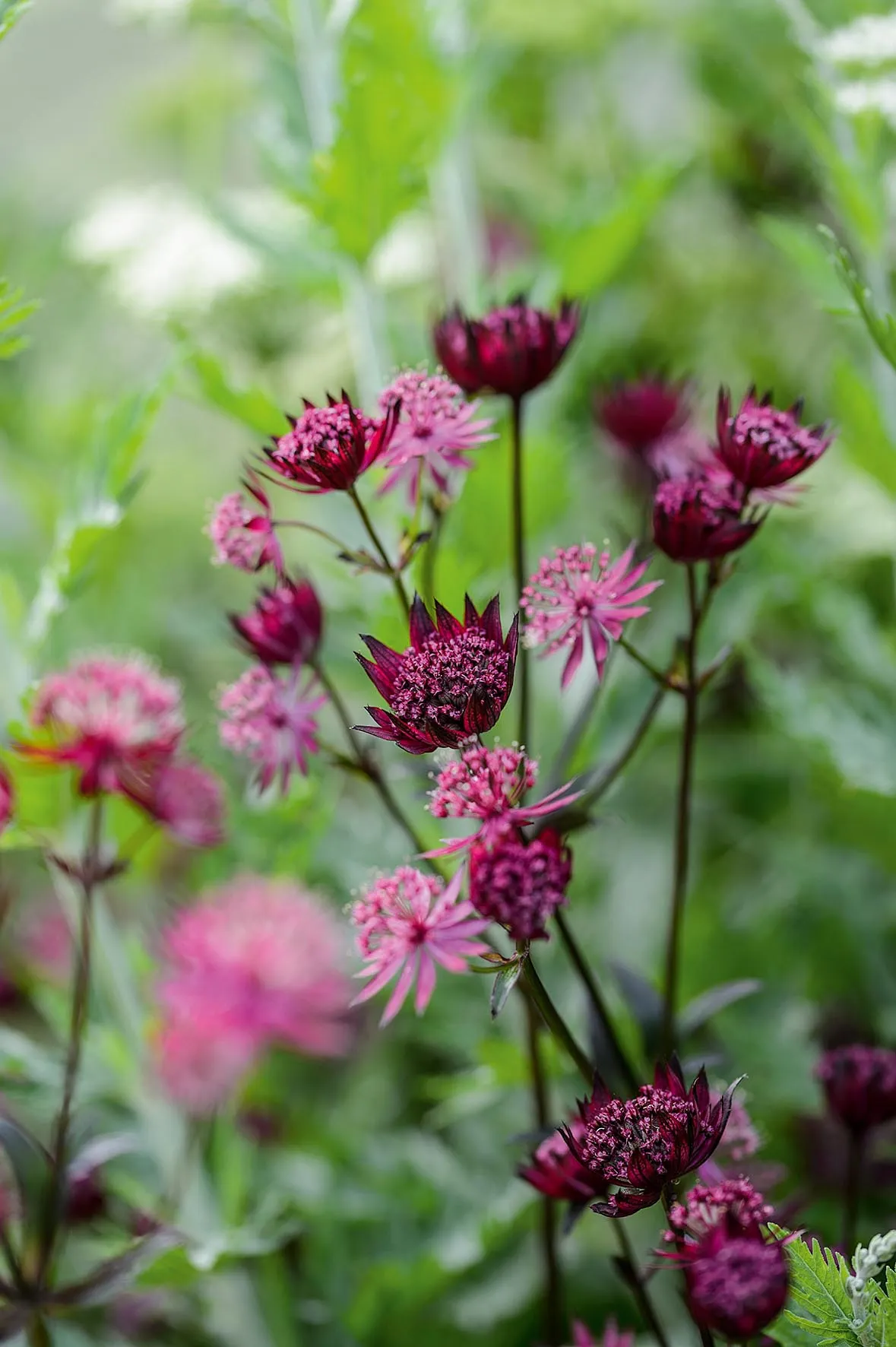
A particularly rich ruby-red cultivar that holds its colour well in dappled shade. Although it prefers a rich soil, it will tolerate drier conditions and flowers from late spring right through until the autumn. 60cm. RHS H7.
4
Cenolophium denudatum
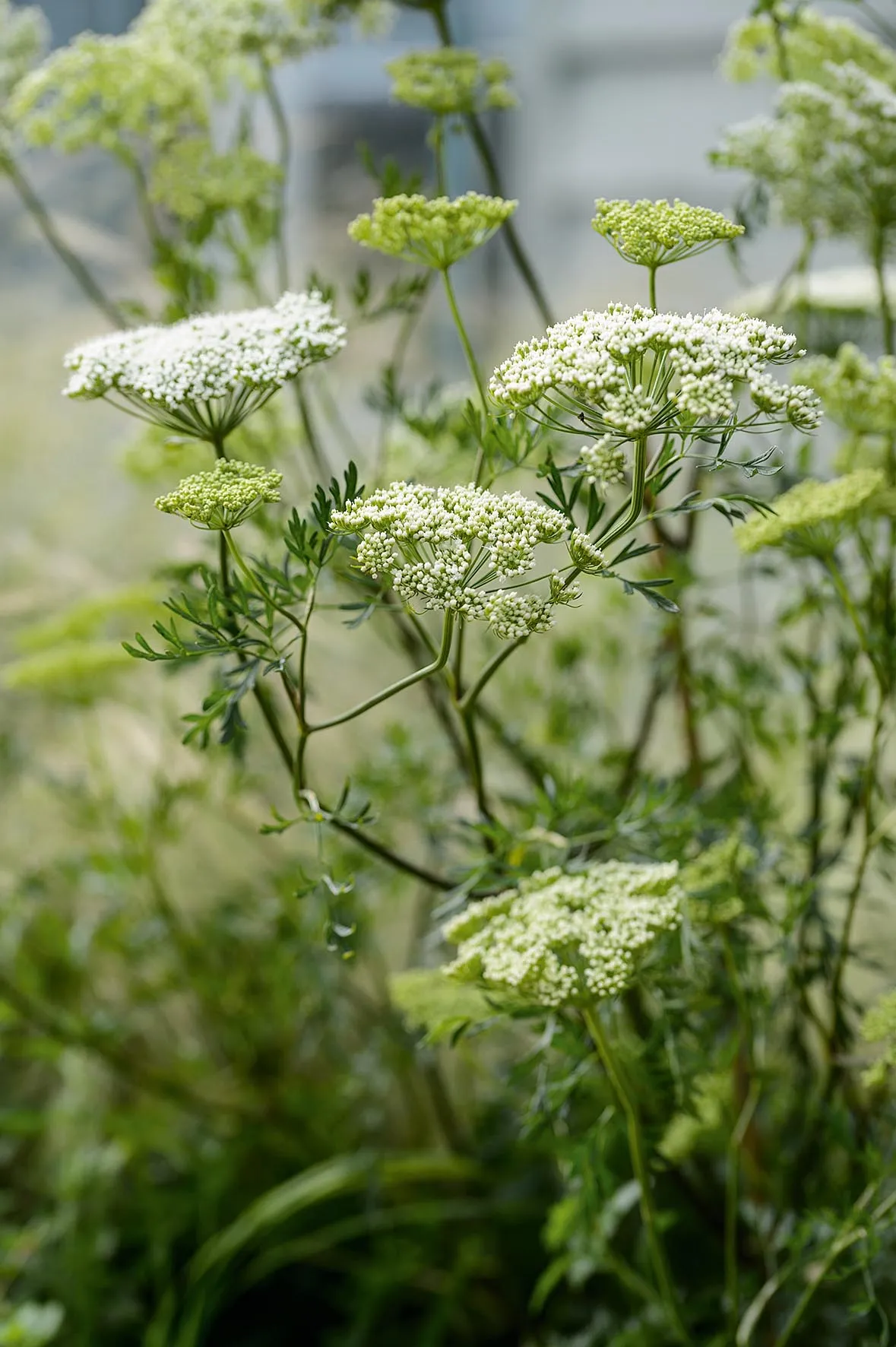
In full sun or partial shade, this glamorous umbel has fern-like foliage and masses of white flowerheads that are a magnet for bees, butterflies and other beneficial insects from July to October. 1m. AGM. RHS H6.
5
Geranium phaeum ‘Raven’
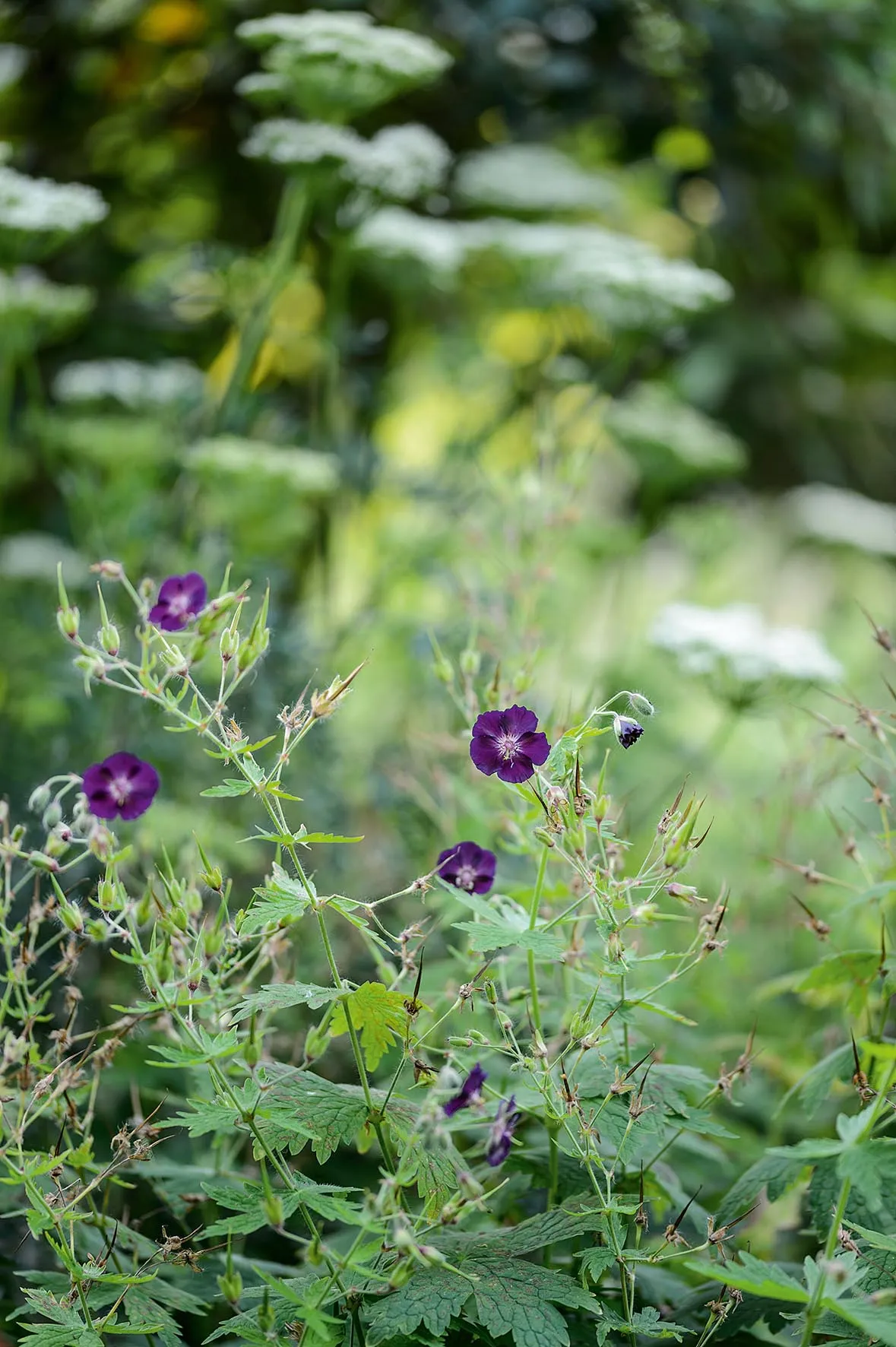
Covered in inky, deep-purple flowers in May and June, this hardy geranium prefers a well-drained spot and will happily tolerate a fair degree of shade. The fresh, green foliage forms useful groundcover. 75cm. RHS H7.
6
Hakonechloa macra
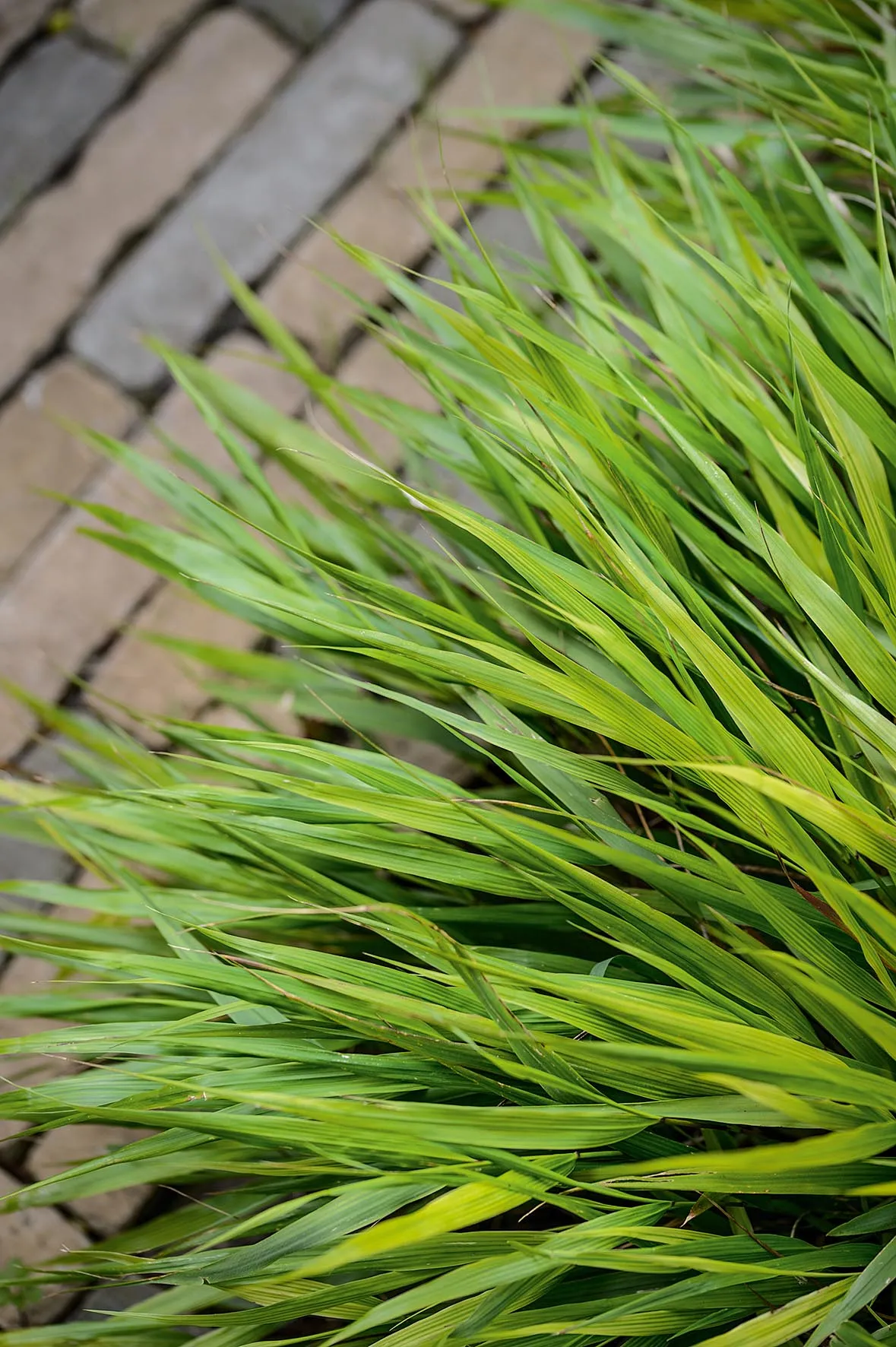
A deciduous, perennial grass that looks wonderful in mass plantings. The bright-green leaves develop russet-red tints in autumn then dry to an attractive tawny-brown and continue to look good throughout the winter. 50cm. AGM. RHS H7, USDA 5a-9b.
*Holds an Award of Garden Merit from the Royal Horticultural Society. †Hardiness ratings given where available.
Useful information
Find out more about Katie’s work at kggardendesign.co.uk.
